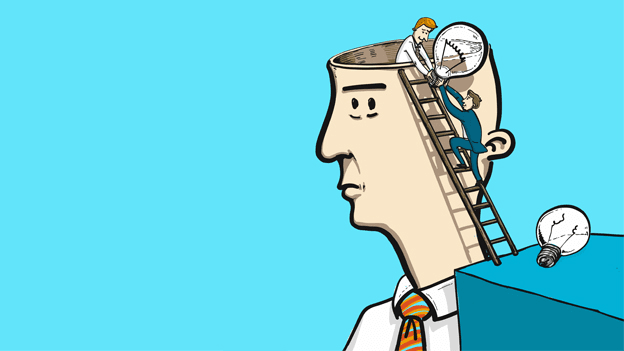Practicing human-centricity with continuous learning

Two specific megatrends—technology changes and globalization—are driving the businesses of today, and there are two possible reactions to them. One is people’s willingness to adopt new skills for their current positions (upskilling). And the other is their willingness to pick up new skills for a completely different job (reskilling). Attitudes toward upskilling and reskilling have profound implications for organizations across the globe. Organizations need to be aware of these trends so that they can be future-ready and attract prospective job candidates. Individuals, who want to avoid becoming obsolete or redundant in the workforce, must keep their skills up-to-date and commit to job-related training throughout their careers.
A key career enabler is Learning Agility, which is a combination of Mental Agility, People Agility, and Results Agility. Most organizations are striving to drive Learning Agility, Curiosity, and Growth Mindset, as key behaviors across the workforce in order to drive competitiveness and relevance.
Therefore, a talent building strategy needs to be in place, and having a robust in-house engine to reskill engineers for deployment has become a necessity. Organizations need to have a talent strategy for long term to sustain and scale in the dynamic market and companies need to ensure that they have dynamic internal systems to map their current/prospective demands to the talent-readiness within their organizations.
To enable continuous growth in technical capability, organizations can adopt a Technical Competency Framework (TCF) that includes a robust technical capability assessment methodology.
What is Technical Competency Framework and how does it help?
For decades, the industry has used relevant years of experience (TRE) as a major parameter to deploy engineers on projects and to decide salaries, promotions, etc. With the introduction of TCF, we are moving away from TRE to differentiation based on proficiency levels in the technical competency of an individual. TCF evolves from the business strategy and offerings in the organization and identifies a clearly defined set of Technical Competency Baskets (TCBs) for the organization to deliver value to customers successfully. It is based on an internationally recognized framework, simple to implement, and scalable to support various business lines.
Every engineer in the organization is mapped to one or more TCB and, through the technical capability assessment methodology defined within the TCF, undergoes three levels of assessment on their most proficient competency and is rated on a scale. An internal subject matter expert does the highest level of assessment, after which each engineer is provided with detailed feedback and progression guidelines to ensure their learning and growth.
The assessment process and the ratings, at any point in time, give the organization a view of the competence levels of the employees at the skill level, program level, offering level, and business line level, thus creating a pool of fungible and highly proficient engineers. While it enables engineers to be more proficient in their job and take on more responsibilities, it also serves as a development platform and helps them scale faster in their careers.
Enabling Continuous Learning
With the TCF in place, the organization needs to engage employees in continuous learning, in a bid to help them achieve their TCF goals. Here are a few ways to go about this:
- Structured Learning: Post completion of any learning event, participants should have access to relevant resources, aligned to the subject at hand, to ensure recall factor and further deep skilling/perspective building on subjects of interest. These can be followed by periodic Learning Circle conversations (one-hour catch-up with participants) that will help the Learning and Development team to understand the impact of the training. Various knowledge sharing platforms can be utilized to bring in-house technical experts, to share knowledge and overlay it with the organizational context.
- Unstructured Learning: An assortment of newsletters (technical and behavioral), along with executive summaries for books, white papers, etc. can be curated and shared every month with employees across the organization. The intent of this is to drive home holistic development of the individual and make learning self-driven. Social media apps (like WhatsApp) can be used to drive peer learning
- Virtual Learning: Every organization needs to have a comprehensive e-Learning platform, which focuses on imparting education on mandatory learnings such as compliance, ethics, values, discipline, information security, etc.
Acknowledging that we live in a competitive era that places significant demands on our young workforce, organizations need to take care in nurturing and providing multiple avenues so that every employee can experience a stress-free and conducive work environment. Programs focusing on the physical, financial, and mental wellbeing of the talent pool can be conducted throughout the year. Companies can also invest time in creating internal learning champions that drive Continuous Learning at every level in the organization.
Keeping in mind the needs of the millennial and young workforce, organizations need to institute several programs to create and sustain a culture of appreciation. Rewards and recognition programs can identify stellar contributions from employees and provide the recognition due to them. The company’s value framework can help to instill positive qualities in all employees through structured interventions.
All of this will be even more effective when the organization’s leaders stand committed to lead by example.















